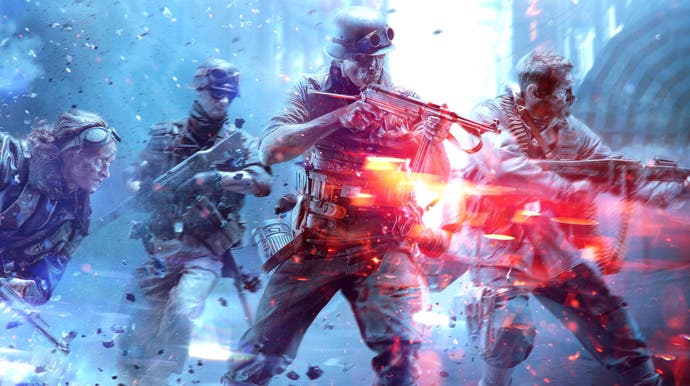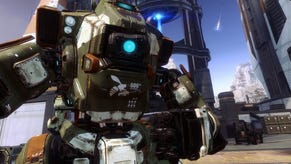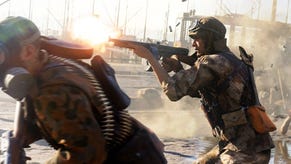Battlefield 5 vs RTX 2060 - can Nvidia's mainstream GPU deliver ray-traced visuals at 1080p60?
Tweaks are required, but the results are impressive.
Earlier this week, we reviewed Nvidia's GeForce RTX 2060. Priced at £330/€370/$350, it's the first mainstream graphics card to hit the market with hardware ray tracing support. Right now, it's early days for RT technology and initial demos suggested that even the top-end RTX 2080 Ti could only run ray tracing with a big resolution or performance hit - so what chance would the significantly cut-down RTX 2060 have? The good news is that BF5's RT performance has improved dramatically, and initial tests produced some promising results on the RTX 2060 at full ultra settings. Frame-rates were still highly variable though, and what we wanted was something more ambitious - a fully locked 1080p60 experience with RT features enabled. The good news is, it can be done.
Before we go on, it's worth pointing out that we're actually testing the RTX 2060 on the current version of Battlefield 5, not the updated version due soon, which includes support for Nvidia's DLSS (deep-learning super-sampling) and perhaps further ray tracing optimisations. Indeed, what makes testing on the current build so intriguing is that there's every chance that DICE may not have even had the chance to test the cut-down RTX 2060 at all - after all, the current BF5 runtime dates back to December 5th 2018. This may explain some of the challenges I faced running the game on the new Nvidia card.
During the review period, I tested the game running at 1080p on full ultra settings, including ultra quality DXR ray tracing, with a ballpark 50fps delivered across the campaign. However, intrusive stutter mars the experience, while performance can vary from a recorded 35fps minimum right up to the 80s. My aim in returning to Battlefield 5 with the RTX 2060 was to bring up those minimums to 60fps, while maintaining as much of the fidelity of the fully enabled experience as possible. You can see the full process in achieving this on the video embedded on this page, but suffice to say, the tweaks required upended some of the preconceptions I had in tuning for performance on PC titles - and it's indicative of the added challenges that ray tracing may bring to game development.
The first thing I noticed about Battlefield 5 running fully maxed on the RTX 2060 is the sheer amount of memory ray tracing requires. System memory saw the game occupying around 11-12GB, while 5.5GB to 5.7GB of the RTX 2060's VRAM framebuffer is consumed by the game - quite astonishing for a 1080p output. Although the 6GB framebuffer in the card never registered as maxed, the evidence does suggest that several of the issues I faced in tweaking the game were related to memory.
First of all, there's the stutter. Frame-time lurches to 80-100ms disrupted the flow of the game and it's something I've only ever seen before trying to run Battlefield 1 on a VRAM-constrained GTX 1050 2GB. Secondly, there was the lack of repeatability in benchmark runs - it seemed to be the case that the longer I ran the game, the more performance degraded, and the more I tweaked settings, the more likely I was to see a prolonged drop in frame-rate - which could be mitigated to a certain extent simply by restarting the game.
Once I realised that memory on the GPU was a potential issue (RTX 2060 has 2GB less than its stablemate based on the fully enabled version of same processor), I had two ways to bring Battlefield 5 performance to another level - by reducing the VRAM requirement by dropping from ultra textures to high (hardly a disaster when running at 1080p) and secondly, by paring back the DXR setting from ultra to medium. Restarting the game delivered a smooth, locked 60 frames per second with beautiful ray traced effects - in line with claims made by Nvidia in its reviewers' guide for the RTX 2060.
So what do you lose by dropping DXR from ultra to medium? There are two compromises. First of all, the resolution of RT-reflected surfaces drops. Secondly, whether surfaces receive ray tracing or not is tied to their roughness - more surfaces receive ray traced coverage on ultra. The resolution issue isn't that noticeable, and it takes some cherry-picked scenes to highlight the drop-off in surface coverage. However, the main view weapon on-screen does lack RT coverage at medium, which is a shame. The bottom line though: some compromise is inevitable, given the fact that we are dealing with a GPU that's a third of the price of the RTX 2080 Ti, with around half of the ray tracing power. But you can still get a properly ray traced experience, and you can run consistently at 60fps (though I found that overclocking was required for a perfect lock) and this is before the next patch arrives, which may well address the RTX 2060 more directly.
Further performance optimisations may be included of course, but what we do know for sure is that the patch also includes support for Nvidia's DLSS technology - which takes a lower precision image and uses a deep learning algorithm to reconstruct the image to a higher resolution. Only one game supports it so far - Final Fantasy 15 - and it's only supported at 4K resolution. Nvidia has released benchmarks suggesting that DLSS will also be supported at 1080p for Battlefield 5, so further RT fidelity could come, at the expense of whatever image quality hit DLSS has over standard rendering.
For what it's worth, on Battlefield 5, I found that the RTX 2060 running ultra DXR at 900p produced performance broadly equivalent to medium DXR at 1080p. Suffice to say, we'll be looking at DLSS and the Battlefield 5 patch as soon as we can - mitigating the performance hit of RT with reconstruction technologies is a logical use of the Turing architecture's capabilities.
There are some further takeaways from the Battlefield 5 RTX experience, and some of them are reminiscent of the arrival of Crysis back in 2008. The importance of VRAM is a consideration here. Just like Crytek's epic back in the day, the arrival of new technology comes with big hikes in system requirements - the evidence of our testing does suggest that overloading framebuffer memory is easily doable at 1080p, and requires some tweaks. I'm hoping that improved memory management to support the RTX 2060 makes its way into the new patch. There are other considerations too - system RAM requirements are larger (though 16GB is fine for Battlefield 5) and the load on the CPU is also higher too.
In summary, even without Battlefield 5's new patch in place, it's possible with two easy tweaks to get a good ray traced experience from Nvidia's cheapest RTX card. If you'd told us that this was the case back at Gamescom last year, where we were at 1080p60 on the far more capable RTX 2080 Ti, we wouldn't have believed it possible - but this is where we are. Results may not be as impressive on other titles - we just don't know yet - but aggressive optimisation from DICE and driver improvements have delivered a night and day improvement to BF5's RT performance, and in the process, ensured that Nvidia's more budget-friendly RTX graphics card can still deliver next-gen visuals at a smooth frame-rate.











